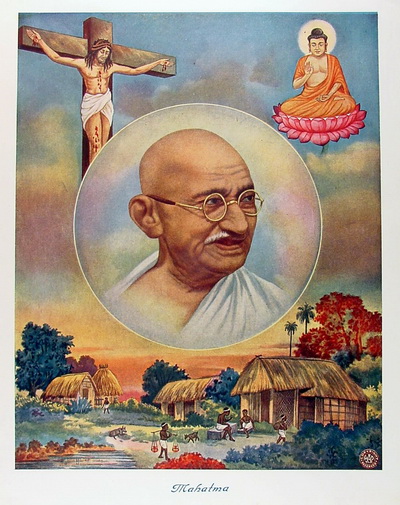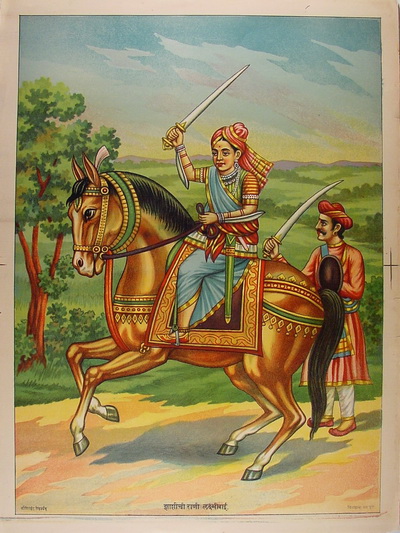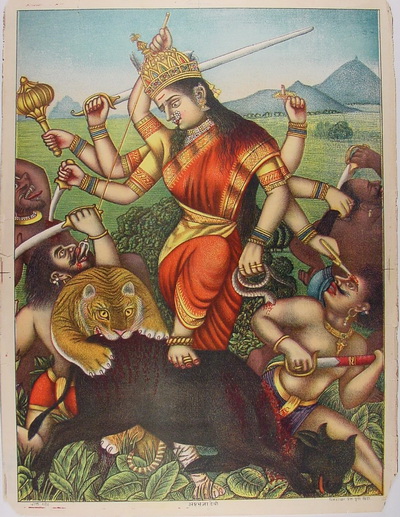Pacifist Males & Warrior Females
During the recent Hero-themed Friday Night Live at the ROM, I brought out examples of popular prints from the collection that explored different hero tropes in South Asian culture. Here are some of them. About a hundred year ago, mass produced colour lithographs proliferated across the South Asian subcontinent creating new imaginary communities through a shared visual imagery. In this new kind of visual culture, hero images seemed to flip traditional gender roles by being dominated by warrior females and pacifist males. While some prints depicted historical figures and other prints religious figures, they all seemed to convey a political ideology. This was a time when much of the South Asian subcontinent was under British colonial rule. New technologies of printing and distribution allowed overt and covert political messages to be passed across across a wider population than ever before. Some prints even encouraged anti-colonial sentiment.

Mohandas Gandhi (1869-1948) is widely considered the leader of the Indian independence movement. This print portrays him as a deified figure in a “holy trinity” with Jesus Christ and the Buddha, other spiritual leaders famous for their messages of compassion and non-violence. They float in the sky above a village scene, as if protectively watching over the “common man” for whom they were considered champions.

This print portrays Lakshmibai (1828-1858), commonly known as the Rani of Jhansi, the Queen of a Maratha-ruled state in north-central India. She is considered one of the leading figures in the 1857 Rebellion when Indian soldiers rose up against the rule of the British East Indian Company. She is depicted here on horse back with her sword raised as if ready for battle. This print was produced by an early colour printing house in India called Chitrashala Press, who produced imagery of a political nature to foster anti-colonial resistance and a sense of national community.

This print shows the Hindu Goddess Ashtabhuja slaying several demon-like figures in retribution for having slain a cow, an animal considered sacred amongst Hindu believers. A later version, produced by the artist Raja Ravi Varma, was banned by the 1911 British Colonial Press Act, for its religious and political connotations. On the one hand, the demons could be seen to represent meat-eating communities in India and colonial authorities were weary of offending religious sensitivities in the wake of the 1857 Rebellion. On the other hand, the goddess as presented here—in a red sari, with long black hair, and a gold crown—can be understand as Mother India (Bharat Mata), a symbol of the Indian nation slaying colonial authority. Also produced by Chitrashala Press, this print can be understood to use a religious figure to convey a contemporary political message. The naturalistic setting and the human-like depiction of the goddess were stylistic innovations to increase the impact of the image on the viewer.
